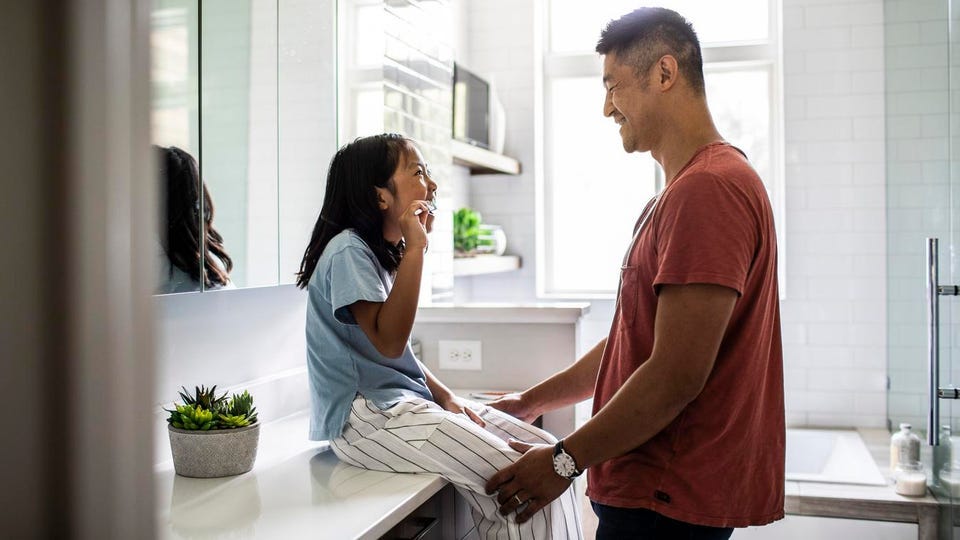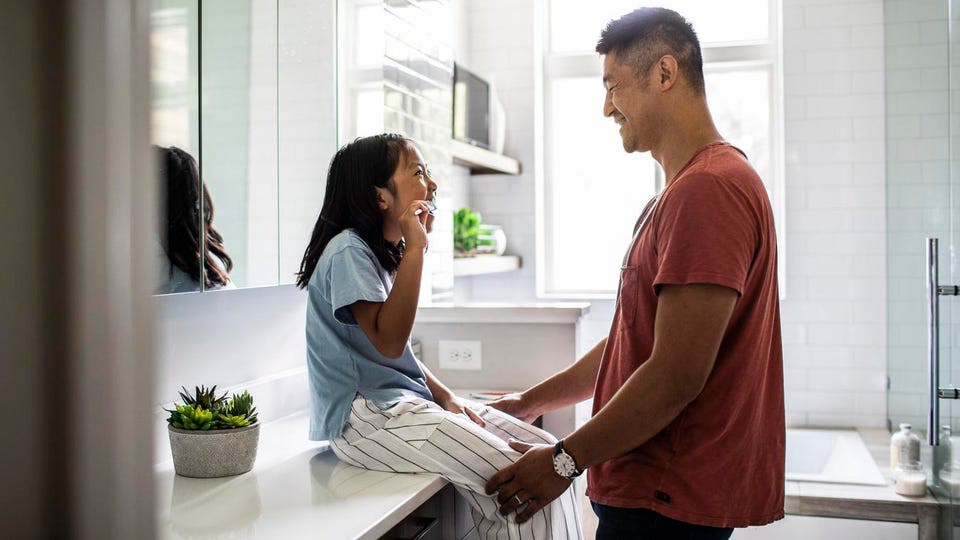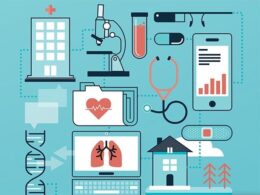Health & Care Transformation
Management Institute
Joaquim Cardoso MSc*
Chief Strategy Officer, Researcher and Editor
November 9, 2022
*MSc from London Business School — MIT Sloan Masters Program
Source: Forbes Technology Council
Executive Summary:
What is the message?
- From electronic medical and health records to wearables for patient monitoring, digital health adoption is rising.
- The most important door that technologists, clinicians and healthcare professionals all need to help open to advance preventative health is the one right before the medicine cabinet-the bathroom door.
ORIGINAL PUBLICATION (full version)

The Most Important Door To Digital Health
Forbes Technology Council
Thomas Serval*
Oct 17, 2022
*CEO of Baracoda, Executive Chairman of CareOS, former Google and Microsoft executive focusing on big ideas in connecting objects.
For much of the previous decade, a long-anticipated digital transformation of healthcare was slowly taking shape.
Globally, healthcare systems were busy building infrastructure to enable doctors to securely share patient histories, access pooled services and use field data to expand knowledge and best practice application.
From software that informs clinical decisions to applications that use machine learning to spot or diagnose abnormalities, technology was already starting to make health systems more effective, efficient and sustainable.
But while digital healthcare had been born, the door to the doctor’s exam room was still the one that mattered the most.
Then Covid-19 hit.
For months, even a simple trip to the doctor wasn’t so simple. Suddenly, from virtual doctor visits to remote consultation and patient monitoring, people-centered health initiatives that had once represented aspirations swiftly became top priorities for health systems.
Digital transformation in healthcare changed from a long-term industry project to an immediate necessity.
Digital health went from being seen as the domain of doctors, hospitals and insurers to something that was also equally in the hands of patients.
As millions turned to social media to stay apprised of Covid-related health information, used mobile devices to screen for potential exposure, administered at-home diagnostic tests and even attended virtual medical appointments, …
… a seismic shift in patient expectations about healthcare access occurred.
According to research from Accenture, in early 2020, only 7% of U.S. patients used virtual consultations with medical providers, but by 2021, that proportion rocketed to 32% (pg. 6).
Extending well past telehealth, McKinsey now estimates that $265 billion worth of Medicare health services could shift to the home by 2025.
… in early 2020, only 7% of U.S. patients used virtual consultations with medical providers, but by 2021, that proportion rocketed to 32% .
Extending well past telehealth, $265 billion worth of Medicare health services could shift to the home by 2025.

For the first time, real-world evidence showed that with the right tools from their own homes, patients themselves could drive improved health outcomes-for their own families and for the benefit of public health at large.
A cultural change that some expected to take 20 years took place in 20 months.
Almost invisibly, the most important door to digital health had changed from one at a doctor’s office to one in the home: the bathroom door.
Almost invisibly, the most important door to digital health had changed from one at a doctor’s office to one in the home: the bathroom door.
While telehealth and remote patient monitoring are advancing primary and diagnostic care, there may be even greater potential in preventative health technology.
Going beyond enhancing and bringing efficiency to clinician-to-clinician and clinician-to-patient interactions, a range of connected health devices are now driving patient self-interaction that promotes preventative health, a category the World Health Organization refers to as mHealth.
While the first wave of mHealth was focused on wearables, much of the next wave of health technology, especially preventative health tech, will be centered in the bathroom.
While the first wave of mHealth was focused on wearables, much of the next wave of health technology, especially preventative health tech, will be centered in the bathroom.

Ever since the popularization of the medicine cabinet in the early 20th century, which was promoted by governments as public health policy, the bathroom has been the center of health in the home.
The bathroom is even visually a quasi-medicalized environment, with metal fixtures and white tile suggestive of institutional hygiene.
To this day, when we need to administer a self-examination, check our weight, apply a bandage or just grab a few moments of total personal privacy, we tend to do it in the bathroom. It’s the place where we already manage health and wellness multiple times per day.
Most bathrooms have looked the same for the past 75 years.
But that’s changing quickly-and not just to match style trends, but to improve health.
Designing and integrating with bathroom-based preventative health tech represents an enormous opportunity for technologists, clinicians and for public health systems at large.
Designing and integrating with bathroom-based preventative health tech represents an enormous opportunity for technologists, clinicians and for public health systems at large.
As an example, researchers at Stanford University published a paper on a toilet that furnishes health providers with urine and stool sample images for disease detection and even leverages some unique biometric information for identifying patients.

…researchers at Stanford University published a paper on a toilet that furnishes health providers with urine and stool sample images for disease detection and even leverages some unique biometric information for identifying patients.

Manufacturers are betting it will be successful because users don’t have to alter their daily routines at all.
People already make unconscious health checks in the bathroom, like weighing themselves daily on a bathroom scale.
Now, connected smart bathroom scales are becoming literal platforms for monitoring health.
New options use technology to passively collect detailed body measurements and other fitness measures beyond weight that may also be more predictive of long-term health.
These smart scales can help people better understand and take control of their health longitudinally while also generating baseline and episodic data that could prove useful to their healthcare providers.
Importantly for adoption, designs blend into the bathroom environment and, in doing so, daily routines.
New options use technology to passively collect detailed body measurements and other fitness measures beyond weight that may also be more predictive of long-term health.
These smart scales can help people better understand and take control of their health longitudinally while also generating baseline and episodic data that could prove useful to their healthcare providers.

Similarly, few routines are more universal and frequent than toothbrushing.
A new range of electric toothbrushes is not only powered by solar and kinetic energy but also connects to the internet to help users keep track of brushing habits.
The new tech can pair with smartphone apps to provide instant feedback on which areas of a user’s teeth are under-brushed to help improve technique and dental health.
What’s more, developers of future smart toothbrushes are working on technology that monitors a range of diseases that can be detected through human saliva.
A new range of electric toothbrushes is not only powered by solar and kinetic energy but also connects to the internet to help users keep track of brushing habits….
What’s more, developers of future smart toothbrushes are working on technology that monitors a range of diseases that can be detected through human saliva.

Even a quick glance at a bathroom mirror will do more in the future.
The next generation of smart mirrors will look more like conventional bathroom mirrors and won’t just arm users with cool video feeds or home automation features-they’ll include high-quality imaging capabilities that can both assist with telehealth appointments and act as diagnostic tools themselves.
They will even monitor skin health over time, alerting users to subtle changes that could indicate potential skin cancers or other diseases.
They will eventually automatically determine your eyeglass prescription, continually monitor the acuity of your vision, flag signs of progressive diseases and recommend follow-up visits with your optometrist or ophthalmologist.
In so many ways, I believe the bathroom will replace the doctor’s waiting room.
The next generation of smart mirrors will look more like conventional bathroom mirrors and won’t just arm users with cool video feeds or home automation features-they’ll include high-quality imaging capabilities that can both assist with telehealth appointments and act as diagnostic tools themselves. …
In so many ways, I believe the bathroom will replace the doctor’s waiting room.

From electronic medical and health records to wearables for patient monitoring, digital health adoption is rising.
The most important door that technologists, clinicians and healthcare professionals all need to help open to advance preventative health is the one right before the medicine cabinet-the bathroom door.
From electronic medical and health records to wearables for patient monitoring, digital health adoption is rising.
The most important door that technologists, clinicians and healthcare professionals all need to help open to advance preventative health is the one right before the medicine cabinet-the bathroom door.
Originally published at https://www.forbes.com.
About the author
CEO of Baracoda, Executive Chairman of CareOS, former Google and Microsoft executive focusing on big ideas in connecting objects.

REFERENCE PAPER
A mountable toilet system for personalized health monitoring via the analysis of excreta
Nature
Seung-min Park, Daeyoun D. Won, Brian J. Lee, Diego Escobedo, Andre Esteva, Amin Aalipour, T. Jessie Ge, Jung Ha Kim, Susie Suh, Elliot H. Choi, Alexander X. Lozano, Chengyang Yao, Sunil Bodapati, Friso B. Achterberg, Jeesu Kim, Hwan Park, Youngjae Choi, Woo Jin Kim, Jung Ho Yu, Alexander M. Bhatt, Jong Kyun Lee, Ryan Spitler, Shan X. Wang & Sanjiv S. Gambhir
https://www.nature.com/articles/s41551-020-0534-9#auth-1
Cite this article
Park, Sm., Won, D.D., Lee, B.J. et al. A mountable toilet system for personalized health monitoring via the analysis of excreta. Nat Biomed Eng 4, 624–635 (2020). https://doi.org/10.1038/s41551-020-0534-9












